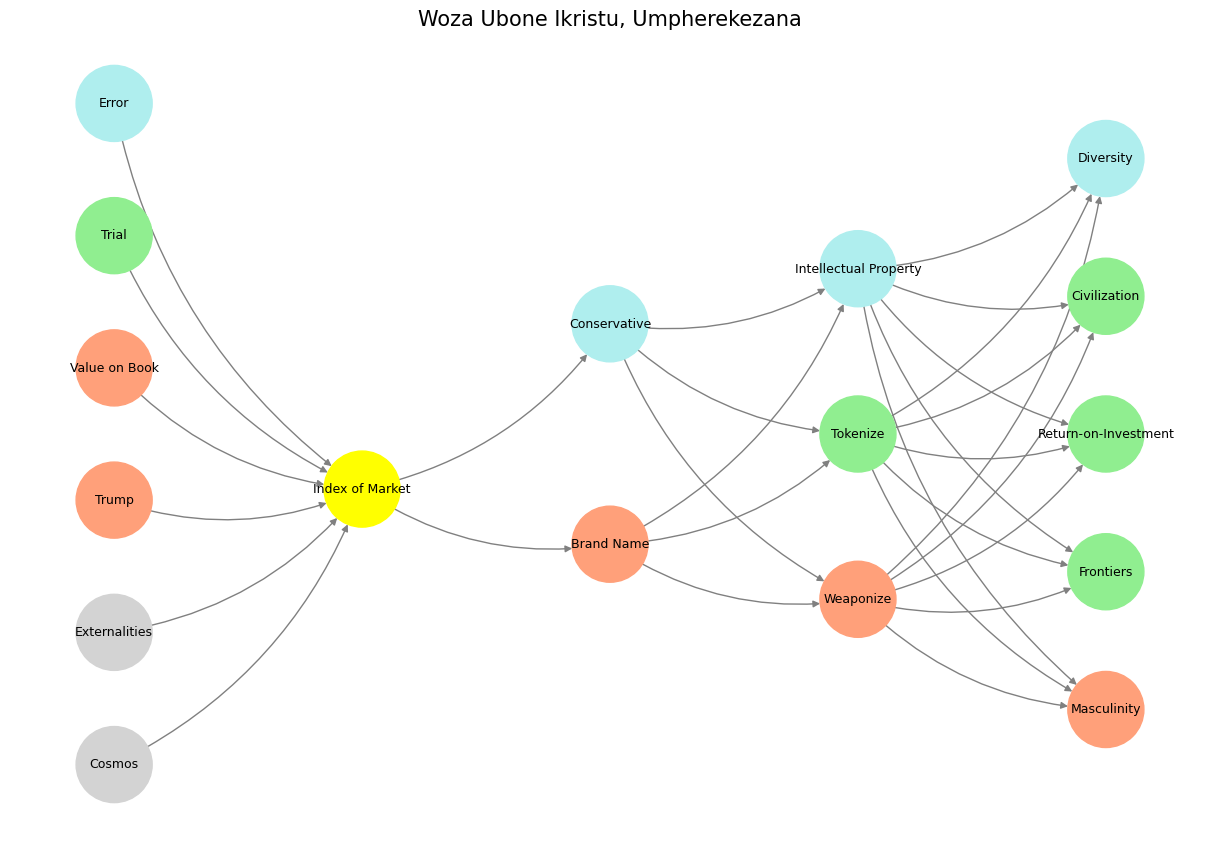Duality#
Hubris in the Absence of the Counterfactual: The Delicate Line Between Confidence and Conceit in Living Kidney Donation#
Intelligence exists not merely to navigate games but to condition our senses so that we are not gamed. In medicine, this principle should be inviolable. And yet, within the highest echelon of medical expertise—where knowledge is presumed unimpeachable and risks appear vanishingly small—the peril of hubris emerges. Nowhere is this more apparent than in the assessment of perioperative mortality in living kidney donors, where the omission of a control population from risk estimation distorts our understanding of safety. The claim that living donor nephrectomy is exceedingly safe, when made without proper counterfactual framing, is a statement teetering on the precipice of overconfidence. It assumes a stability that does not exist. It is a gamble in the 5/95 layer of reality—the realm of long-term commitments and trust of professionals based on minimal information (compared to massive combinatorial search space compressed into a profession), where faith in a system can be shattered when the exception manifests.
The odds of a living kidney donor dying within 90 days of surgery are approximately 3 in 10,000—a small but nonzero risk. The problem with such a statistic, as presented in the literature, is not its magnitude but its lack of context. Without a control population, without the counterfactual of what would have happened had these individuals not undergone surgery, we mistake correlation for causation. A donor who dies within this window—whether by surgical complication, immune suppression, or even homicide—becomes a statistic within a dataset that, in its current form, implies a direct link to the procedure. But risk is a two-sided equation: if we do not define the alternative, we implicitly suggest that there was none. In reality, in a cohort of 10,000 healthy individuals followed for 90 days, deaths—however rare—will occur. Some will die of accidents, some of infections, and a small fraction, however tragic, of unforeseeable violence. To attribute every such outcome to the procedure itself is to engage in intellectual negligence, not rigor.

Fig. 14 Games People Play. The five realms in which the games exist are resource (inherited, orphan), need (transform, stagnate, squander), cost (brand, oblivion), means (weaponize, tokenize, monopolize – in a word, personalize target), ends (cadence). See also Edge, γ 😃 ⭕️. Most neural network models are designed to minimize the ecological cost function, which is synonymous with maximizing the efficiency and means by which our agent-protagonist navigates the labyrinth of life – none of the madness of Odysseus. From this perspective, the cadence is merely a final leap along an efficiency frontier. Morality, represented by the Plagal – or even Authentic – cadence operates on similar terms. Demands a narrative rather than unbounded exploration of the massive combinatorial space of life. In Milos’s Amadeus, the film follows a very specific tragectory, capturing the evolution and context of Mozart’s work. And its cadence is Mozart’s death, whose cadence is Lacrimosa, which has a Plagal cadence …#
This error is not merely theoretical. It has real-world consequences. Consider the case of the living liver donor at Mount Sinai, where an exceptionally rare post-operative event—a fatal bacterial infection from raw oysters—led to devastating consequences for the institution, the surgeon, and, above all, the patient’s family. Could the surgery have played a role? Possibly. A transient immune suppression could have made the donor more vulnerable, though it is equally plausible that the same donor, had he not undergone surgery, would have suffered the same fate. But in the absence of a control population, the narrative became singular: the procedure caused the death. The tragedy was absorbed entirely into the framework of risk associated with transplantation, even as the true complexity of causation remained unexamined.
This is the 5/95 problem—the epistemic equivalent of falling in love at first sight, of making a lifelong bet on information too thin to justify certainty. When we present risk estimates without counterfactuals, we commit an intellectual leap of faith, assuming that what is seen is all that exists. The surgeon, confident in their technique, reassures the donor: “The risk is negligible. You are healthy. This is safe.” But safety, as a concept, is always relative. A 1.2 per 10,000 risk contextualized within the general population makes sense; stripped of that context, it appears paradoxical—either the risk is zero or it is a failure of medical progress. The latter framing, of course, is incorrect, but without the counterfactual, it is also inevitable.
Medicine cannot afford the sin of hubris. This is especially true in transplantation, where the stakes are uniquely existential. Unlike most surgeries, where risk is justified by the imperative of disease, living donation involves healthy individuals making a sacrifice—altruistic, noble, but fundamentally unnecessary for their own survival. In this context, the framing of risk is not a trivial academic matter; it is the foundation upon which autonomy is built. If we tell a donor the risk is 3 in 10,000, but fail to say that the background risk in the general population is already nonzero, we mislead them by omission. Their decision is not informed; it is merely guided toward a predetermined conclusion.
The irony of all this is that Epicurus himself—the philosopher of tranquility, who dismissed the fear of death as irrational—still understood that uncertainty could not be eliminated. His famous dictum, that death is nothing to us because we do not experience it, does not negate the reality that it arrives unpredictably. Even Epicureans still face risks. If medicine is to avoid the fate of Icarus—soaring on the wings of progress, yet undone by an overestimation of its own safety—it must embrace uncertainty rather than obscure it. The proper role of intelligence is not to eliminate risk but to contextualize it, to ensure that the 5/95 leap is an aware leap, not an ignorant one.
The path forward is clear. Studies on living donor outcomes must include a control group—an equally healthy population that allows risk to be understood in relative, not absolute, terms. Only then can we truly inform consent, ensuring that those who choose to donate do so with a full understanding of what they are accepting. Without this, we are not practicing science; we are performing theater—a grand narrative of safety, interrupted only when reality refuses to conform. And in the 5/95 layer, reality always asserts itself eventually.
Show code cell source
import numpy as np
import matplotlib.pyplot as plt
import networkx as nx
# Define the neural network fractal
def define_layers():
return {
'World': ['Cosmos', 'Externalities', "Trump", 'Value on Book', 'Trial', 'Error', ],
'Mode': ['Index of Market'],
'Agent': ['Brand Name', 'Conservative'],
'Space': ['Weaponize', 'Tokenize', 'Intellectual Property'],
'Time': ["Masculinity", 'Frontiers', 'Return-on-Investment', 'Civilization', 'Diversity']
}
# Assign colors to nodes
def assign_colors():
color_map = {
'yellow': ['Index of Market'],
'paleturquoise': ['Error', 'Conservative', 'Intellectual Property', 'Diversity'],
'lightgreen': ['Trial', 'Tokenize', 'Frontiers', 'Return-on-Investment', 'Civilization'],
'lightsalmon': [
"Trump", 'Value on Book', 'Brand Name',
'Weaponize', "Masculinity"
],
}
return {node: color for color, nodes in color_map.items() for node in nodes}
# Calculate positions for nodes
def calculate_positions(layer, x_offset):
y_positions = np.linspace(-len(layer) / 2, len(layer) / 2, len(layer))
return [(x_offset, y) for y in y_positions]
# Create and visualize the neural network graph
def visualize_nn():
layers = define_layers()
colors = assign_colors()
G = nx.DiGraph()
pos = {}
node_colors = []
# Add nodes and assign positions
for i, (layer_name, nodes) in enumerate(layers.items()):
positions = calculate_positions(nodes, x_offset=i * 2)
for node, position in zip(nodes, positions):
G.add_node(node, layer=layer_name)
pos[node] = position
node_colors.append(colors.get(node, 'lightgray'))
# Add edges (automated for consecutive layers)
layer_names = list(layers.keys())
for i in range(len(layer_names) - 1):
source_layer, target_layer = layer_names[i], layer_names[i + 1]
for source in layers[source_layer]:
for target in layers[target_layer]:
G.add_edge(source, target)
# Draw the graph
plt.figure(figsize=(12, 8))
nx.draw(
G, pos, with_labels=True, node_color=node_colors, edge_color='gray',
node_size=3000, font_size=9, connectionstyle="arc3,rad=0.2"
)
plt.title("Woza Ubone Ikristu, Umpherekezana", fontsize=15)
plt.show()
# Run the visualization
visualize_nn()


Fig. 15 Tryptophan, Tryptamine, and Y’all Who Be Trippin’. Information in nature is encoded in gravity and photons and zapped from the cosmos, to earth, to life, to silicon. As for the point of view, thats open for discourse. Source: Lorenzo Expeditions. And if we invert all the aforementioned, then we might say something like: The code provides a unique blend of art and science, creating a visual narrative that might engage viewers in thinking about the structure of thought, decision-making, or the whimsical nature of reality as depicted in “Alice’s Adventures in Wonderland” - Grok-2.#

